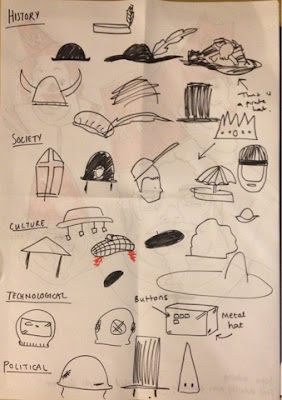- 'Power' that certain groups in society have over others
Existing as
physical institutions or as institutions as a form of
organisation.
How these effect our thoughts, feelings, behaviours and attitudes.
Michel Foucault
- Discipline to shape and control us - creating what Foucault calls 'docile' bodies, aka passive people
- His 2 most famous works charting the rise of prisons and asylums
- Traces the point in which mad and sane are discovered
- Starts historically:
'Madness & Civilisation' book
Madness didn't always exist in society. In the Middle Ages, madness wasn't seen as negative (the happy idiot)
As society develops, this was no longer endearing. Industrialisation brought about the rise of new social attitudes about who was 'useful' and who was 'useless' in society.
'
The Great Confinement' starts
Giant workhouses/prisons - anyone deemed useless to society was locked up and made to work to help to 'improve their character'.
Forced people to be productive to society under the threat of being beaten and punished
Eventually this began to be seen as corrupt. Rather than correcting deviants, it accelerated them.
So,
specific institutions were created to correct
specific deviants, aka, the formal creation of:
Hospitals
Asylums
Prisons
Asylums operated under a different disciplinary tactic. Instead of threatening punishment, to control the insane, the inmates were regularly treated like children. Positive behaviour was reinforced.
Different than just forcing people to behave - different than the society that represses.
Now using more subtle forms of mental control.
With the birth of the institutions, new forms of knowledge were produced e.g. off the back of the asylums, psychiatry was formed. Legitimises and reproduces this practice.
Criminology from prisons
Institutional experts were created.
Foucault aimed to show how these forms of knowledge and rationalising institutions affect people. They make us internalise our own responsibility...
They teach us to
self regulate and control ourselves.
Pre-modern society where we had a king. The goal of punishment was to be as grizzly as possible in order to teach other people. Control through this visual, scary punishment = displaying the power of the king.
Being hung, drawn and quartered did nothing to teach one person, but effectively controlled everyone else.
Disciplinary society and disciplinary power in
Modern society.
- Creating certain techniques to control us rather than just punish us
- Discipline is about monitoring and surveying people to make them more productive as Foucault says.
Panopticism as a disciplinary technique
Panopticon was designed by Jeremy Bentham 1791
Design for an institutional building. He was a philosopher trying to create a multi-functional space that would be as effective as possible for whatever use anyone wanted Could be a school, prison, hospital etc.
Specific layout with cellular units around the outside where individuals could be kept. Never built in his lifetime, but has been now. Supervision tower in the centre.
Building ensures maximum visibility.
From central observation tower, supervisor can see everyone.
Everyone in cells can
only see supervisor - the face of the institution.
Exact opposite to dungeon where deviants are locked away out of view. It is placing them on permanent display and scrutiny.
Foucault thinks this is a metaphor for the way that society treats its people. Always being watched and every action is monitored. This sensation of permanently feeling watching is internalised. This begins to alter your behaviour. You are gradually trained to start disciplining yourself.
You take responsibility for your own actions.
Process assures automatic, self reproducing power.
People end up willingly submitting to power.
E.g. Prisoner - no possibility to escape
Workhouse - no slacking
Makes people more productive.
Fear of being caught out
Panopticons are so effective at internalising. Eventually a supervisor isn't even needed, people regulate themselves.











































